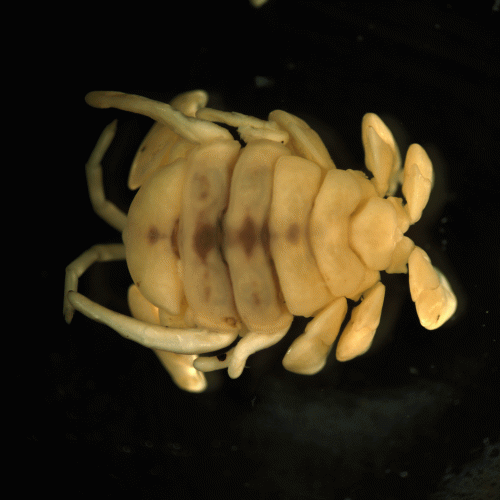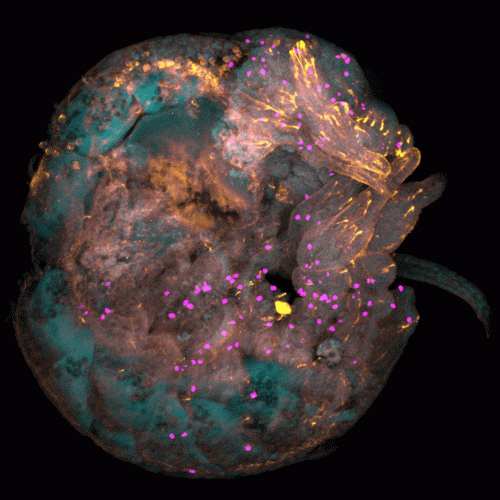Of whales and lice
Posted by Laurel Hiebert, on 3 August 2010
Imagine an ordinary louse. You might be thinking of the small insects that infest the human scalp and cause intense itching. What you may not know: lice actually exist on great variety of birds and mammals. Even whales have ‘lice,’ which are not closely related to human head lice and are giant in comparison (can be over 25 mm long!), but these lice do have a similar lifestyle to the common head lice. Whale lice are amphipod crustaceans that exist as ectoparasites in the folds of the whale’s skin and feed on dead skin and debris. Below is a photo of an adult whale louse, almost 2 cm long.

As a student in the MBL’s Embryology class, I had the unique opportunity to get a close look at embryonic whale lice. Whale lice brood developing embryos in a brood chamber called a marsupium. Thus, they have no free-swimming stage and spend their entire life on the whale. Whale lice (Cyamus ovalis) collected from a beached whale were procured from Jon Seger and Heather McGirk of University of Utah for the course. In class, we dissected out embryos from the marsupium of two gravid females. Using techniques and materials provided by the course, we looked at expression of developmental patterning genes by floursecence immunostaining. See confocal stack below with DAPI (nuclei) in teal, phoso-histone H3 (mitotic cells) in magenta, and HRP (neurons) in orange.



 (7 votes)
(7 votes)